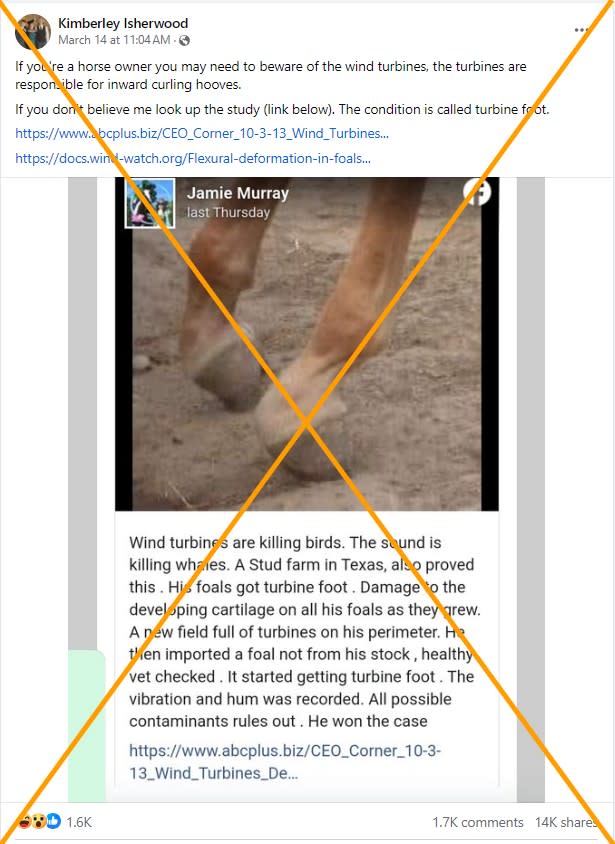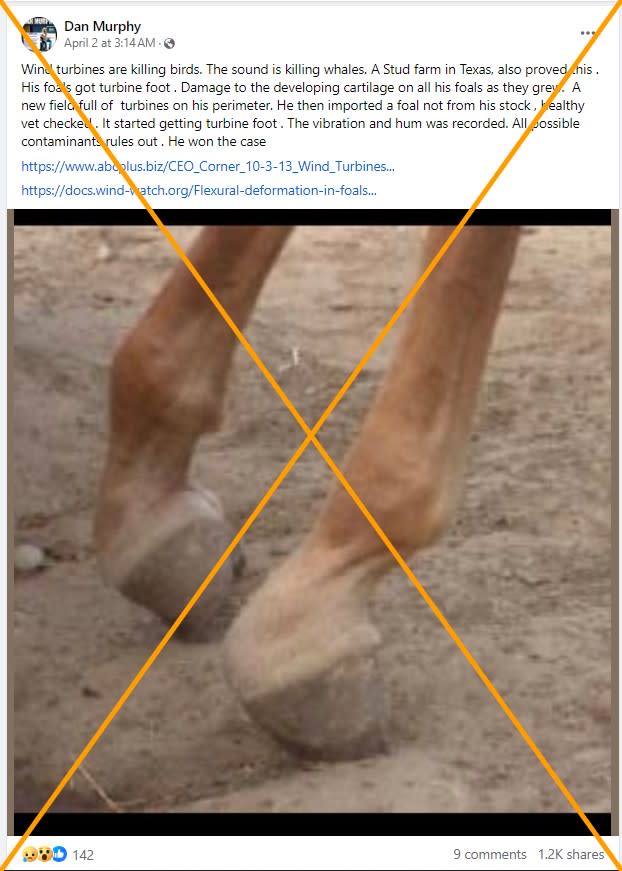No evidence wind farms cause deformities in foals
Social media users claim wind farms are disfiguring the hooves of nearby horses. This is unproven; the claims rely on an unconfirmed hypothesis in a student paper, and a Canadian veterinary school said photos cited as additional evidence appear to show a treatable congenital disorder.
"If you're a horse owner you may need to beware of the wind turbines," says a March 14, 2024 Facebook post with more than 14,000 shares. "The turbines are responsible for inward curling hooves."
Similar posts sharing photos of malformed hooves spread across Facebook and X in March and April.


Claims about "turbine foot" have circulated on social media since at least 2018, while blogs discussing the purported phenomenon date back to 2013.
Many of them cite a 2012 dissertation from a master's student at the Technical University of Lisbon (archived here). The report describes a group of foals in Portugal that were diagnosed with a deformation of the distal interphalangeal joint, hypothesizing that low-frequency noise (LFN) from nearby wind turbines could be to blame (archived here).
However, the paper concluded more research was needed -- and AFP found no studies confirming its hypothesis.
"The consensus among faculty and staff members spoken to at the University of Calgary Faculty of Veterinary Medicine (UCVM) is that there is no scientific basis to wind turbines causing deformities in horses," the institution told AFP in an April 3, 2024 email.
UCVM added that the photos circulating on social media appear to depict flexural limb deformity (FLD), a treatable and common congenital condition in horses (archived here).
"There are no accepted studies proving a link between FLD and wind turbines," the faculty said.
Wind turbine research
Wind turbines use large propellers to harness kinetic energy and convert it into electricity (archived here). According to the United Nations, wind is one of the renewable energy resources necessary to reduce global greenhouse emissions (archived here).
The American National Renewable Energy Laboratory said in a 2023 report that more research is needed on how wind turbines affect animal reproduction and migration. It does not mention horses specifically (archived here).
Bats and birds can get struck by propeller blades (archived here), while humans living nearby have expressed concerns about symptoms they attribute to LFN (archived here).
However, two 2013 studies from the University of Sydney and the Massachusetts Institute of Technology examining research on the health effects of wind turbines concluded there was no evidence connecting the mills to physical ailments in humans (archived here and here).
Another University of Sydney study published that year found self-reported symptoms could be the psychological result of suggestions that wind turbines are harmful (archived here).
AFP and other fact-checking organizations have previously debunked claims about wind turbines harming whales.
Read more of AFP's reporting on misinformation about the environment here.
